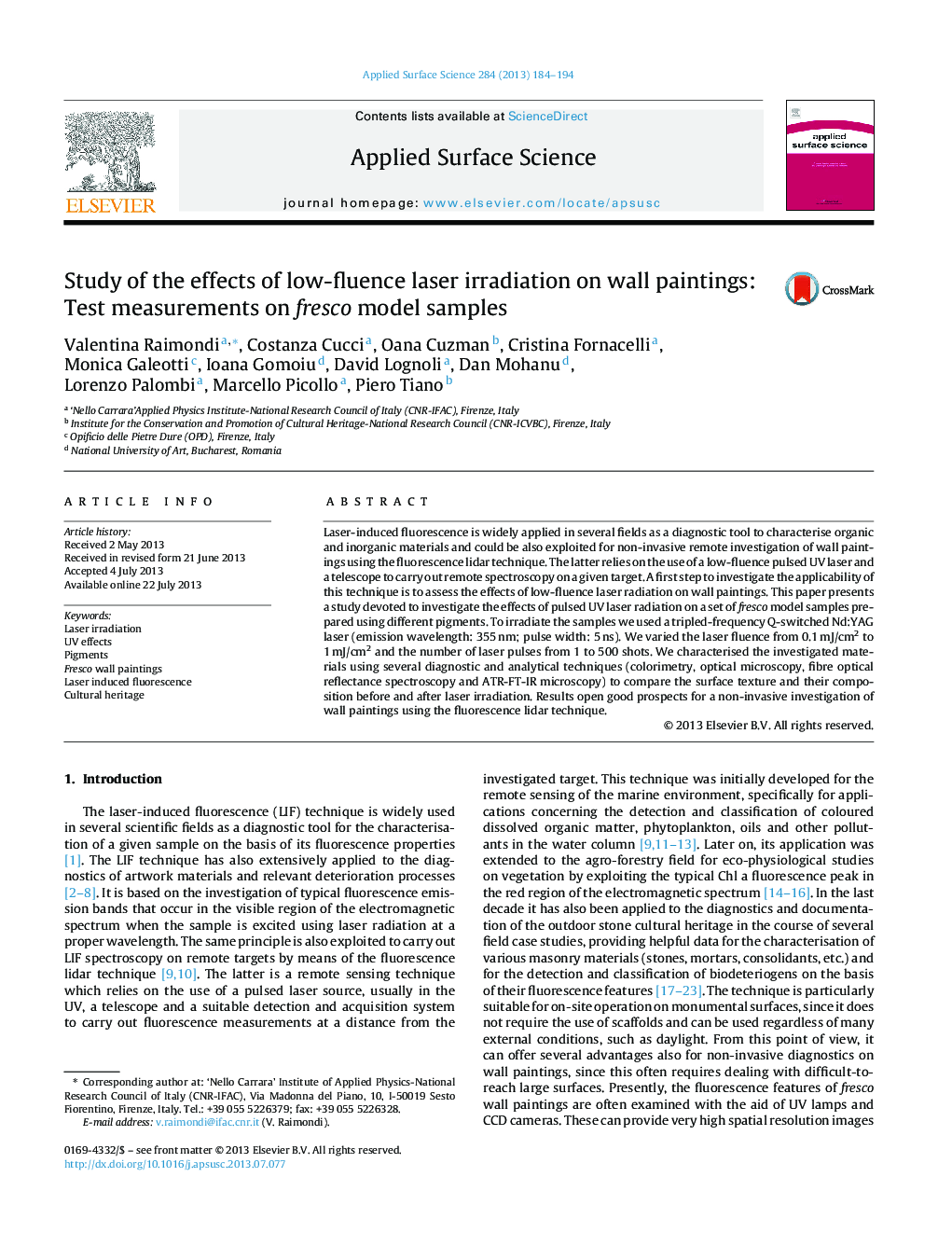| Article ID | Journal | Published Year | Pages | File Type |
|---|---|---|---|---|
| 5352592 | Applied Surface Science | 2013 | 11 Pages |
Abstract
Laser-induced fluorescence is widely applied in several fields as a diagnostic tool to characterise organic and inorganic materials and could be also exploited for non-invasive remote investigation of wall paintings using the fluorescence lidar technique. The latter relies on the use of a low-fluence pulsed UV laser and a telescope to carry out remote spectroscopy on a given target. A first step to investigate the applicability of this technique is to assess the effects of low-fluence laser radiation on wall paintings. This paper presents a study devoted to investigate the effects of pulsed UV laser radiation on a set of fresco model samples prepared using different pigments. To irradiate the samples we used a tripled-frequency Q-switched Nd:YAG laser (emission wavelength: 355Â nm; pulse width: 5Â ns). We varied the laser fluence from 0.1Â mJ/cm2 to 1Â mJ/cm2 and the number of laser pulses from 1 to 500 shots. We characterised the investigated materials using several diagnostic and analytical techniques (colorimetry, optical microscopy, fibre optical reflectance spectroscopy and ATR-FT-IR microscopy) to compare the surface texture and their composition before and after laser irradiation. Results open good prospects for a non-invasive investigation of wall paintings using the fluorescence lidar technique.
Related Topics
Physical Sciences and Engineering
Chemistry
Physical and Theoretical Chemistry
Authors
Valentina Raimondi, Costanza Cucci, Oana Cuzman, Cristina Fornacelli, Monica Galeotti, Ioana Gomoiu, David Lognoli, Dan Mohanu, Lorenzo Palombi, Marcello Picollo, Piero Tiano,
